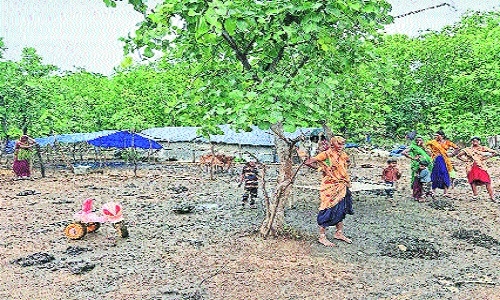Illegal grazing is a cause of human-wildlife conflict too
| Date :08-Feb-2024 |

By Kaushik Bhattacharya
Often, illegal grazing is portrayed as ‘locals vs outsiders’ conflict. But, in forests of Vidarbha, human-wildlife conflict is more prevalent due to high human population and incompatible land use practices in the forest fringes. And, illegal grazing in forest areas and its fringes causes direct conflict between wildlife, livestock, and human beings. Wildlife-human conflict can be described as a situation wherein the use of land resources by humans and wildlife affect each other in a negative manner. A majority of people living near forest areas depend on natural resources available in the area and on agriculture. In this situation, it is difficult to keep human beings away from forests for their livelihood. Therefore, Maharashtra Forest Department has come up with a rule under which the department allows locals to graze their cattle on a limited area. Forest Department also recovered some official charges from the farmers and villagers for grazing of cattle. But, when illegal grazing or mass grazing takes place in forest areas, which is against the rule, it becomes a major contributing factor for human-animal conflict in the region.
When the herbivorous animals in the jungle do not get grass in forest areas or in corridors, which they frequently use, then they naturally turn towards farmlands thereby raising the threat of human-animal conflict. Illegal grazing by Kathiyawadi cows and sheep in Vidarbha and especially in Nagpur division has seen a tremendous rise in the last couple of decades. “All territorial forests are connected with corridors. This helps wildlife to travel from one forest to another. These corridors which are comprised of patches of grasslands, forests and agricultural fields have a majority of grasslands and the wildlife depends on these grasslands for grazing. But, due to illegal grazing the grass lands are now overgrazed in our region,” said Udhamsingh Yadav, Honorary Wildlife Warden, Nagpur. “Kathiyawadi as well as other sheep-hearding tribes from outside states are permanently settled in Vidarbha region with their livestock. They normally start illegal grazing in forest areas during monsoon when new grass starts growing. The mass illegal grazing by Kathiyawadi cattle as well as sheep stunts the growth of grass in that particular area, due to which wildlife does not get grassland to graze after monsoon,” Yadav told ‘The Hitavada’.
According to him, grasslands in Vidarbha have overgrazed drastically and illegal grazing is a big reason. Lack of natural grass in grasslands compel the animals in Schedule-I to enter farmlands, leading to human-animal conflict. In recent time, electrification of agriculture fields by local farmers has increased because of interference of wildlife near human settlements. The cases of electrocution of wildlife also have increased and the Forest Department has no data of such wildlife deaths, said the Honorary Wildlife Warden. Foot and Mouth Disease (FMD) is a severe, highly contagious viral disease of livestock that has a significant economic impact on those rearing cattle. The disease affects cattle, swine, sheep, goat, and other cloven-hoofed ruminants. Illegal or over grazing by these sheep and cows may cause FMD among wild animals too. Though the Forest Department has no mechanism to detect FMD among wild animals, it may claim lives of herbivores in the forest, Yadav feared. Ajinkya Bhatkal, Honorary Wildlife Warden, Nagpur, also felt that there was utmost need to conduct a study on regeneration of grasses in forest area and also to conduct space-sharing studies. “Such studies will help map the effect of illegal or over grazing in grasslands,” he said.
To avoid illegal or over grazing in forest area, the department should provide fodder alternatives for livestock to villagers. The department must also strengthen the mechanism to monitor illegal grazing by outsiders, he emphasised. Illegal grazing helps spread toxic shrubs like West Indian Lantana and Congress Grass in forest area. These shrubs have serious impact on both agricultural and natural systems of the forest, Bhatkal explained. According to another wildlife expert, “The situation with respect to sheep grazers is particularly alarming. Fresh grass is the main fodder of Chinkara fawns and other herbivores which inhabit these forests. The issue of livestock disease transmission to wild animals is never considered by the authorities who turn a blind eye towards such transgressions. These pose a great threat to the survival of the wild animals and species.” All these concerns are genuine, but have not been looked at as challenges for grassland dynamics as well as for wildlife. Will it happen now?